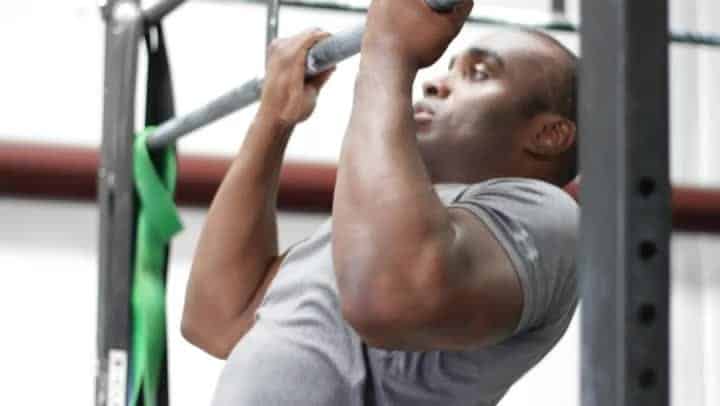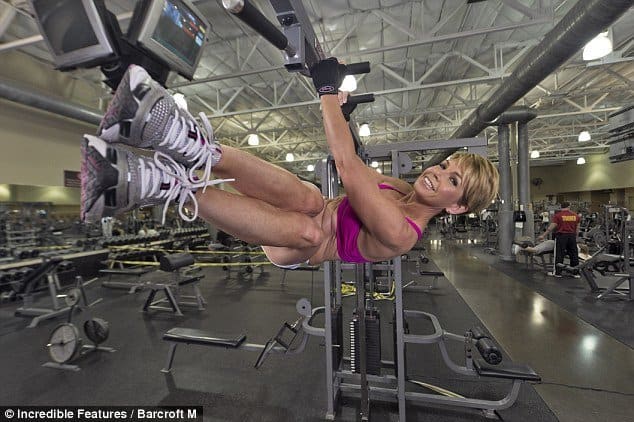The Many Benefits of Strength Training… Even For You, Graybeard
No more excuses! Studies show that there are many benefits of strength training for older adults. Tim Carrigan did it, and so can you.
A COUPLE of months ago I tore out an article from the Wall Street Journal written by Laura Johannes, entitled, The Benefits of Pumping Iron Later in Life. “Right up my alley”, I muttered to “Puppy”, my nickname for my niece’s cat whom I was catsitting.
Although it’s true that once we get much past 40, I recommend the weight we lift should be more our weight and less iron weight, the most important thing is that you strength train in whatever form is appealing enough for you to do consistently.
Bodyweight training is great because your body is typically nearby and available. A guy weighing 180 pounds, or a gal weighing 140 pounds has plenty of weight to lift. If done properly, there’s less chance for injury than when you “get under the bar”.
All that said, I still like to grab the bar and hoist it here and there, and so should you if that’s your preference, as it is for Tim Carrigan, as we’ll see in a moment.
The byline of Ms. Johannes’ article is:
Intense Strength Training Helps Fend Off Age-Related Disability, Research Shows.
“That’s right”, I muttered to Puppy as she looked blankly at nothing in particular, “This is a big reason I exhibit very few of the physical attributes of a man of my chronological age”, I boasted. (If Puppy could yawn…)
The Wall Street Journal article profiles Tim Carrigan, who when he reached 50, suffered lower back so severe that he could barely walk. Like many injuries that become more pronounced as we age, Carrigan’s happened in a childhood accident.
The pain was intermittent and the muscle tone that was lost happened slowly, but finally he realized that needed to do something.
Here’s Carrigan doing something:

Photo Credit: Bob O’Connor for The Wall Street Journal
He did strength training twice a week on a circuit of a dozen of weight machines. Two times per week of strength training is the minimum required to improve strength and body composition, and to get on track for experiencing the many benefits of strength training.
Soon, Carrigan was feeling better, stronger, and sleeping better.
This is completely unsurprising.
In The Anti-aging Effects of Exercise, I concluded:
… with exercise, you get less fat, more mobility, greater strength, and resistance to dreaded old age diseases like dementia and Alzheimer’s…. Given that in the United States, only 5% of adults are meeting what might be described as minimal physical activity guidelines, and with the obesity statistics getting absurd, it’s time to join the minority and have a long, strong life.
You Can Do It!
Once upon a time there was some bunk circulating in the ether that said older adults were too frail to pump iron. Now the research demonstrates that strength training helps stave off age-related disability, preserve bone mass (particularly) in women and even boosts brainpower.
“It’s way more dangerous to not be active as an older adult,” says Miriam Nelson, professor of nutrition at Tufts University’s Friedman School of Nutrition Science and Policy in Boston. (1)
She sure is right, and so get a handle on the following six pointers and strength training benefits culled from the aforementioned Wall Street Journal article (2):
- You can train intensely and safely at any age as long as you prepare right and exercise with good form. A healthy person at 60 can gain two to three pounds of lean muscle in as short as six months, and this is without optimizing nutrition.
- Beyond their physical benefits, cardiovascular workouts aid in memory tasks and strength training boosts “executive function” or higher-level brain tasks.
- Strength training can improve mobility and reduce pain in arthritic joints.
- When strength training, older adults should ingest 1.5 grams of protein per kilogram of body weight, spread throughout the day. Take two-thirds of your weight in pounds, and the resulting number is roughly your daily protein per day in grams.
- Make sure you don’t begin your exercise regimen injured. Although exercise can speed up the healing process, you must know what you’re doing and should be guided by a trainer, physical therapist or doctor if you’re injured or are otherwise encumbered.
- Know the proper form. Don’t necessarily copy what others are doing in the gym, because many people do not use proper form. Get a trainer to show you how to exercise. It’s worth the expense.

OK, now tuck some inspiration under your belt, grab a buddy and together find someone to initiate you to the marvels of strength training.
If you still need to grease the skids a bit, start with part one of my six part series:
The Functionally Fit Fast Workout — Strong, Enduring, Mobile (Part I)
Have fun!
Last Updated on March 13, 2018 by Joe Garma




